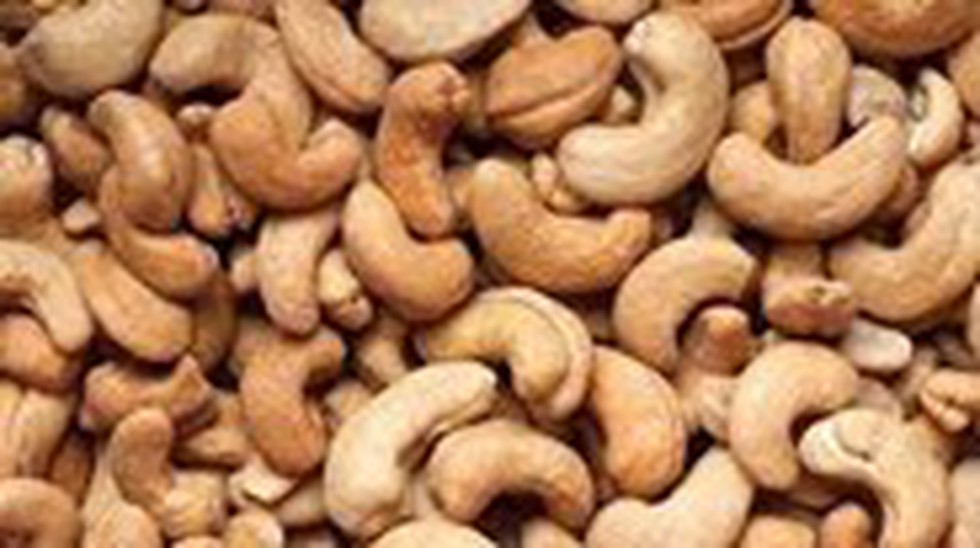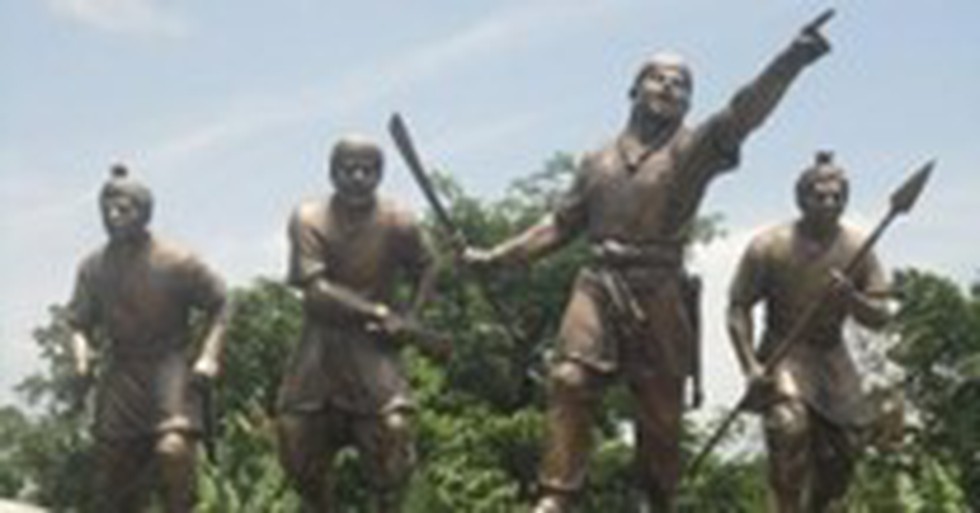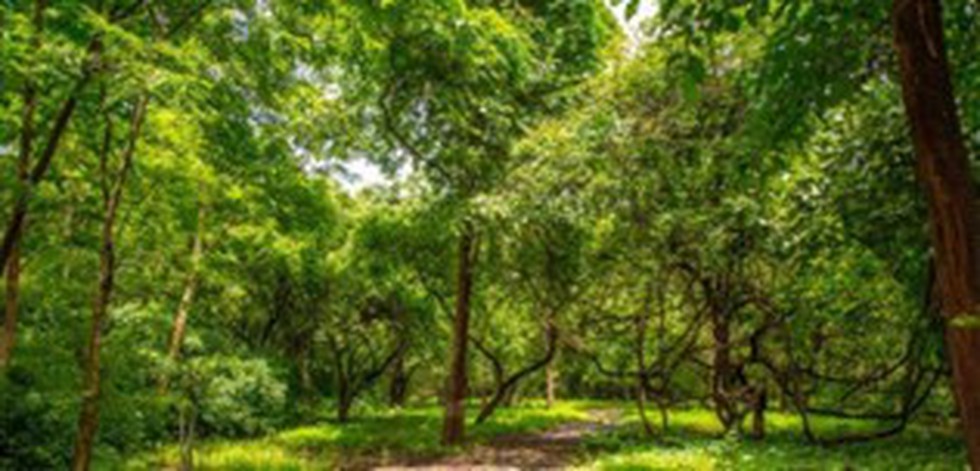
About the Cashew Crop:
- It is native to Brazilin Latin America and was introduced to India by the Portuguese in the 16th century (1570).
- Climatic condition
- Soil and climate: Well-drained deep sandy loam soils are the best for growing cashews. In general, all soils, from sandy to laterite, are well suited for this crop.
- It is very well adapted to Indian coastal areas under hot, humid conditions
- Temperature: In the range of 20 to 38 °C; relative humidity in the range of 60 to 95%.
- Rainfall: annual precipitation in the range of 2000 to 3500mm.
- Extremely low temperatures and frost are not conducive to raising cashew plantations.
- The cultivation of this crop is being extended to non-traditional areas in the plains of Karnataka, Madhya Pradesh, Chattisgarh, and some parts of North East hill region.
- India holds the second-largest share in the world's cashew nut production and exports.
- The country's top export destinations include the UAE, the Netherlands, Japan, and Saudi Arabia.
Key facts about Agricultural and Processed Food Products Export Development Authority (APEDA)
- It was established by the Government of India under the Agricultural and Processed Food Products Export Development Authority Act of 1985.
- It works under the Ministry of Commerce and Industry.
- Objective: To develop and promote the export of scheduled products.
- The products specified under the APEDA ACT are called scheduled products, and exporters of such scheduled products are required to register under APEDA.
- It provides financial assistance, information, and guidelines for the development of scheduled products.

About Lachit Borphukan:
- He has been revered in Assam as the warrior who defeated Mughal armies in the Battle of Saraighat in 1671.
- He was commander of the Ahom armies during the battle of Saraighat and fought on the banks of the Brahmaputra in Guwahati.
- He was a brilliant military commander.
- He was chosen as one of the five Borphukans of the Ahom kingdom by King Charadhwaj Singha and given administrative, judicial, and military responsibilities.
- Borphukan preferred guerrilla tactics, which provided an edge to his smaller but fast-moving and capable forces.
- He died a year after the Battle of Saraighat from a long-festering illness.
Key points about the AHOM Kingdom
- The Ahom kings ruled large parts of what is now known as Assam for nearly 600 years, from the early 13th century to the early 19th century.
- This was a prosperous, multi-ethnic kingdom that spread across the upper and lower reaches of the Brahmaputra valley, surviving on rice cultivation in its fertile lands.
- The Ahoms engaged in a series of conflicts with the Mughals from 1615-1682, starting from the reign of Jahangir until the reign of Aurangzeb.

About the Amplifi 2.0 Portal:
- Amplifi (Assessment and Monitoring Platform for Liveable, Inclusive, and Future-Ready Urban India) portal aims to provide data on Indian cities.
- It is making raw data from Indian cities available on a single platform for academics, researchers, and stakeholders to help data-driven policymaking.
- Currently, 258 urban local bodies (ULB) have been on-boarded, and data for 150 cities is available on the portal.
- It provides data on a range of information for several cities, including, for example, the total diesel consumption and the number of samples tested for water quality.
What is the Urban Outcomes Framework 2022?
- It has been developed for the Ministry by the National Institute of Urban Affairs and PwC India.
- It shifts the focus from the indices to the data with a comprehensive list of indicators.
- With this, data across 14 sectors is streamlined to increase focus on data collection, and disaggregated data can be analysed by domain experts.
- The initiative also provides the opportunity to create new frameworks on open data.
- The 14 sectors are — demography, economy, education, energy, environment, finance, governance, health, housing, mobility, planning, safety and security, solid waste management, and water and sanitation.

About the Avian Influenza virus (H9N2):
- H9N2 is a subtype of influenza, a virus that causes human influenza as well as bird flu.
- This virus is found worldwide in wild birds and is endemic to poultry in many areas.
- Poultry is considered a genetic incubator for the origin of the H9N2 novel avian influenza virus that infects humans.
- Symptoms
- Infections range from mild, flu-like symptoms or eye inflammation to severe, acute respiratory disease or death.
- The severity of the disease depends on the virus causing the infection and the characteristics of the infected individual.
- Prevention: Maintaining personal and hand hygiene, including washing hands with soap, before and after contact with animals is essential to avoid being infected by the virus.
Classification of Influenza:
- The influenza virus, which causes illness, is classified by WHO into four types: A, B, C, and D.
- According to the US Centres for Disease Control and Prevention (CDC), only the influenza A and B viruses are known to cause epidemics.
- The C-type virus usually causes mild respiratory illnesses, while the D-type virus typically affects cattle and is not known to infect humans.
- Only the influenza A virus is divided into subtypes, and the subtype is based on two proteins on the surface of the virus, hemagglutinin (H) and neuraminidase (N).

About Carbon Dioxide Removal:
- It is using technologies, practices, and approaches to remove carbon dioxide from our atmosphere through deliberate and intentional human actions.
- This includes traditional methods like afforestation as well as more sophisticated technologies like direct air carbon capture and storage (DACCS).
What are the different CDR methods?
- Biochar
- It is the substance produced by burning organic waste from agricultural lands and forests in a controlled process called pyrolysis.
- Although it resembles common charcoal in appearance, the production of biochar reduces contamination and is a method to safely store carbon.
- Pyrolysis involves the burning of wood chips, leaves, dead plants, etc. with very little oxygen, and the process releases a significantly small quantity of fumes.
- Biochar is a stable form of carbon that cannot easily escape into the atmosphere.
- Bioenergy with carbon capture and storage (BECCS)
- It involves bioenergy production, often through combustion to generate electricity or heat.
- The resulting CO2 emissions from this combustion are captured and stored underground, preventing them from contributing to the greenhouse effect.
- It sequesters photosynthetically fixed carbon as post-combustion CO2.
- Direct air carbon capture and storage (DACCS)
- It extracts CO2 directly from the atmosphere at any location.
- This captured CO2 is then permanently stored in deep geological formations or used for other applications.
- It uses electricity to remove CO2 from the air.
- Enhanced rock weathering
- It involves pulverising silicate rocks to bypass the conventionally slow weathering action.
- The resultant product, usually a powder, has a higher reactive surface area, which is then spread on agricultural lands for further chemical reactions.
- Ocean alkalinity enhancement
- It involves adding alkaline substances to seawater to accelerate this natural sink.

About Rheumatoid Arthritis (RA):
- It is an autoimmune and inflammatory disease, which means that your immune system attacks healthy cells in your body by mistake, causing inflammation (painful swelling) in the affected parts of the body.
- RA mainly attacks the joints, usually many joints at once. RA commonly affects joints in the hands, wrists, and knees.
- In a joint with RA, the lining of the joint becomes inflamed, causing damage to joint tissue. This tissue damage can cause long-lasting or chronic pain, unsteadiness (lack of balance), and deformity (misshapenness).
- RA can also affect other tissues throughout the body and cause problems in organs such as the lungs, heart, and eyes.
- Cause: RA is the result of an immune response in which the body’s immune system attacks its own healthy cells. The specific causes of RA are unknown, but some factors can increase the risk of developing the disease.
- Treatment:
- RA can be effectively treated and managed with medication(s) and self-management strategies.
- Treatment for RA usually includes the use of medications that slow the disease and prevent joint deformity, called disease-modifying antirheumatic drugs (DMARDs).

About Real Estate Investment Trusts (REITs):
- A REIT is a company that owns and typically operates income-producing real estate or related assets.
- They pool money from the investors and invest it in commercial real estate projects.
- These may include office buildings, shopping malls, apartments, hotels, resorts, self-storage facilities, warehouses, and mortgages or loans.
- Unlike other real estate companies, a REIT does not develop real estate properties to resell Instead, a REIT buys and develops properties primarily to operate them as part of its own investment portfolio.
- REITs provide a way for individual investors to earn a share of the income produced through commercial real estate ownership without actually having to go out and buy commercial real estate.
- In general, REITs specialise in a specific real estate sector. However, diversified and speciality REITs may hold different types of properties in their portfolios, such as a REIT that consists of both office and retail properties.
- Most REITs are publicly traded like stocks, which makes them highly liquid (unlike physical real estate investments). REITs are like shares that are listed on the stock exchange, which means you can buy or sell them anytime on the exchange.

About Constitution Day:
- Constitution Day, also known as Samvidhan Divas or National Law Day, is celebrated in India on November 26th each year.
- This day commemorates the adoption of the Constitution of India on November 26, 1949. The Constitution came into force on January 26, 1950.
- In 2015, the government decided to celebrate this day to promote constitutional values among citizens.
Constituent Assembly (CA) of India:
- The Constituent Assembly (CA) was set up in 1946 under the Cabinet Mission Plan of 1946.
- The Assembly held its first meeting on December 9, 1946, and elected Dr. Sachhidanand Sinha, the oldest member of the Assembly, as the Provisional President.
- On December 11, 1946, the Assembly elected Rajendra Prasad as its permanent Chairman.
- The CA took 3 years (1946-49) to complete the drafting.
- The CA had 299 elected members from provincial legislative assemblies.
- The CA had 13 committees, including the drafting committee headed by B.R. Ambedkar.
- The Constitution was adopted in 1949 when 284 members signed it, marking the completion of the Constitution-making process.
Interesting facts about the Indian Constitution:
- It is the world’s longest: The original copy of the Indian Constitution is 251 pages long; it is the most detailed in the world.
- It is completely handwritten and designed.
- Prem Behari Narain Raizada, a master of calligraphic art, singlehandedly handwrote the Constitution.
- Nand Lal Bose, a pioneer of modern Indian art, designed the borders of every page of the Constitution and adorned it with art pieces.
- The original manuscript of the Constitution was written on parchment sheets measuring 16 x 22 inches and having a lifespan of a thousand years. It weighed 3.75 kg.

About Barda Wildlife Sanctuary (BWLS):
- Location:
- It is located in the state of Gujarat.
- It lies roughly 15 kilometres from Porbandar and 100 kilometres west of Gir Forest National Park.
- It has a hilly landscape, and the sanctuary sprawls over an area of 192.31 square kilometres.
- It lies at an altitude that ranges from 79.2 metres to 617.8 metres above sea level.
- There are two waterways, the Bileshvary River and the Joghri River, and two dams, Khambala and Fodara.
- Ethnic races such as Maldharis, Bharvads, Rabaris, and Gadhvis live in this region.
- To develop Barda as the second home for the Asiatic lion, the state government implemented the 'Gir-Barda Project' in 1979.
- Flora:
- It is characteristically abundant in floral diversity, which consists of a good number of medicinal plants.
- The sanctuary boasts about 650 plant species, which comprise Rayan, Babul, Ber, Jamun, Amli, Gorad, Bamboo, Dhav, Dhudhlo, etc
- Fauna: Leopard, Hyena, Wild boar, wolf, Jackal, blue bull, rare and endangered spotted eagle, crested hawk eagle, etc.
What is Project Lion?
- It envisages landscape ecology-based conservation of the Asiatic Lion in Gujarat by integrating conservation and eco-development.
- The project is being implemented in the Gir landscape in Gujarat, which is the last home of the Asiatic lion.
- Conservation status of Asiatic Lion (Panthera leo):
- IUCN: Endangered
- Wildlife (Protection) Act 1972: Schedule I
- CITES: Appendix I

About Amaterasu:
- It is one of the highest-energy cosmic rays ever detected.
- It has been named Amaterasu after the Japanese sun goddess.
- It has an energy exceeding 240 exa-electron volts (EeV). That is millions of times more than particles produced in the Large Hadron Collider, the most powerful accelerator ever built, and equivalent to the energy of a golf ball travelling at 95 mph.
- It comes only second to the Oh-My-God particle, another ultra-high-energy cosmic ray that came in at 320 EeV, detected in 1991.
- Amaterasu appears to have emerged from the Local Void, an empty area of space bordering the Milky Way galaxy.
What are Cosmic Rays?
- They are echoes of violent celestial events that have stripped matter of its subatomic structures and hurled it through the universe at nearly the speed of light.
- Essentially, cosmic rays are charged particles with a wide range of energies consisting of positive protons, negative electrons, or entire atomic nuclei that travel through space and rain down onto Earth nearly constantly.
- They hit Earth’s upper atmosphere and blast apart the nucleus of oxygen and nitrogen gas, generating many secondary particles.
- These travel a short distance in the atmosphere and repeat the process, building a shower of billions of secondary particles that scatter to the surface.


























































































































































.png)
.png)
.png)
.png)
.png)


.png)
.png)
.png)





.png)
.png)






.png)
.png)
.png)
.png)
.png)
.png)
.png)
.png)
.png)

.png)







.png)
.png)


.png)
.png)
.png)


.png)

.png)
.png)





.jpg)

.png)
.png)


.png)

.png)
.png)
.png)

.jpg)

.jpg)


.png)

.png)
.png)
.png)
.png)
.png)
.png)
.png)
.png)
.png)
.png)




.png)

.png)





.png)
.png)
.png)
.png)
.png)
.png)
.png)
.png)
.png)
.png)
.jpg)
.jpg)

.png)
.png)
.png)
.png)
.png)
.png)
.png)
.png)
.png)
.png)
.png)
.png)
.png)
.png)
.png)
.png)
.png)
.png)
.png)
.png)
.png)
.png)



.png)
.png)

.jpg)
.jpg)


.jpg)
.jpg)
.jpg)
.jpg)
.jpg)

.jpg)








.jpg)
.jpg)
.jpg)
.jpg)
.jpg)

















.jpg)
.jpg)







.jpg)


















.jpg)
.jpg)






























































































.jpg)
.jpg)


























.jpg)

.jpg)










.jpg)








.jpg)




.jpg)










.jpg)


















.jpg)












































.jpg)














.jpg)
.jpg)
.jpg)





.jpg)

.jpg)
.jpg)





































































.jpg)


































.jpg)
.jpg)
















































.jpg)












.jpg)


.jpg)




.jpg)
.jpg)
.jpg)

.jpg)
.jpg)
.jpg)
.jpg)

.jpg)
.jpg)
.jpg)

.jpg)
.jpg)
.jpg)
.jpg)
.jpg)
.jpg)
.jpg)
.jpg)

.jpg)


.jpg)
.jpg)
.jpg)
.jpg)
.jpg)
.jpg)
.jpg)
.jpg)
.jpg)
.jpg)











.jpg)
.jpg)





.jpg)
.jpg)
.jpg)
























.jpg)
























.jpg)









.jpg)
.jpg)







.jpg)
.jpg)









































.jpg)
.jpg)
.jpg)
.jpg)
.jpg)

.jpg)
.jpg)
.jpg)
.jpg)
.jpg)


.jpg)
.jpg)
.jpg)
.jpg)
.jpg)

.jpg)
.jpg)
.jpg)
.jpg)
.jpg)
.jpg)
.jpg)
.jpg)
.jpg)
.jpg)
.png)

.png)
.png)

.png)
.png)
.png)
.png)


.jpg)
.jpg)

.jpg)
.jpg)
.jpg)

.png)
.png)
.png)
.png)
.png)
.png)
.png)

.png)
.png)
.png)
.png)
.png)
.png)
.png)
.png)
.png)
.png)





































































-min.png)



.png)




.png)








































